
Pityrodia is a genus of flowering plants in the mint family, Lamiaceae and is endemic to Australia, most species occurring in Western Australia, a few in the Northern Territory and one in Queensland. Plants in this genus are shrubs with five petals joined to form a tube-shaped flower with four stamens of unequal lengths.

Petasida ephippigera, the Leichhardt's grasshopper, is a relatively large, brightly coloured pyrgomorph species of grasshopper in the monotypic genus Petasida, native to the Top End region of tropical northern Australia.

Pityrodia augustensis, commonly known as Mount Augustus foxglove, is a flowering plant in the mint family Lamiaceae and is endemic to a small area in Western Australia. It is a small, bushy shrub with its branches, leaves and some of its flower parts densely covered with woolly hairs. It is similar to the lovely foxglove and the sandplain foxglove but has very different leaves from those species.
Dasymalla chorisepala is a flowering plant in the mint family Lamiaceae and is endemic to Western Australia and the Northern Territory. It is a small shrub with its branches and leaves densely covered with hairs. The leaves are stalkless, egg-shaped and covered with yellowish hairs while the flowers are small, tube-shaped and white.
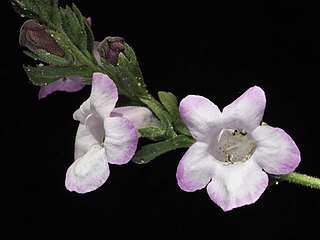
Dasymalla teckiana is a flowering plant in the mint family Lamiaceae and is endemic to Western Australia. It is a small, openly branched, sticky shrub with mauve and white, bugle-shaped flowers.

Pityrodia loricata is a flowering plant in the mint family Lamiaceae and is endemic to Australia. It is a dense, greyish, multi-stemmed shrub with whorled leaves, prominent sepals and pale, pinkish-white flowers. It is common in Western Australia and the Northern Territory and there is a single record from South Australia.

Muniria quadrangulata is a flowering plant in the mint family Lamiaceae and is endemic to Arnhem Land in the Northern Territory. It is a shrub with its branches and leaves covered with a thick layer of woolly hairs and pale yellow flowers in groups of up to nine, surrounded by woolly hairs.

Pityrodia byrnesii is a flowering plant in the mint family Lamiaceae and is endemic to Arnhem Land in the Northern Territory. It is a shrub with hairy, glandular stems, stalkless, flat leaves and fragrant, off-white, bell-like flowers with purple stripes inside the tube.
Muniria angustisepala is a flowering plant in the mint family Lamiaceae and is endemic to the Northern Territory. It is an erect shrub with softly hairy, warty leaves and pale yellow, woolly flowers.
Muniria lanceolata is a flowering plant in the mint family Lamiaceae and is endemic to Arnhem Land in the Northern Territory. It is a shrub with its branches and leaves densely covered with a layer of short, greyish, branched hairs and red flowers near the ends of the branches.
Muniria megalophylla is a flowering plant in the mint family Lamiaceae and is endemic to Arnhem Land in the Northern Territory. It is a shrub with its branches and leaves densely covered with a layer of short, greyish, branched hairs and small groups of reddish-pink flowers near the ends of the branches.
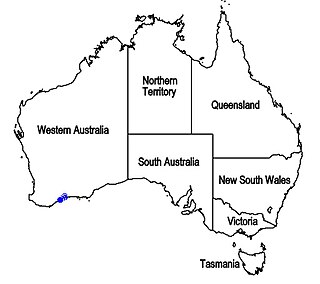
Hemiphora exserta is a flowering plant in the mint family Lamiaceae and is endemic to the south-west of Western Australia. It is a sprawling shrub with its branches densely covered with white, woolly hairs. Its leaves are rough and wrinkled and the flowers are deep pink or dark red, curved and tube-shaped with spreading petal lobes on the end.

Pityrodia gilruthiana is a flowering plant in the mint family Lamiaceae and is endemic to Arnhem Land in the Northern Territory. It is a dark green, spreading shrub with sticky, glandular branches and leaves and fragrant, off-white, bell-like flowers with purple stripes on the end.

Pityrodia jamesii is a flowering plant in the mint family Lamiaceae and is endemic to Arnhem Land in the Northern Territory, Australia. It is a spreading shrub with hairy, yellowish brown stems, sticky, hairy, egg-shaped to lance-shaped leaves and white, bell-like flowers.

Pityrodia lanuginosa is a flowering plant in the mint family Lamiaceae and is endemic to Arnhem Land in the Northern Territory. It is a woolly, spreading shrub with its leaves arranged in four rows and off-white, bell-like flowers with dark purple streaks.
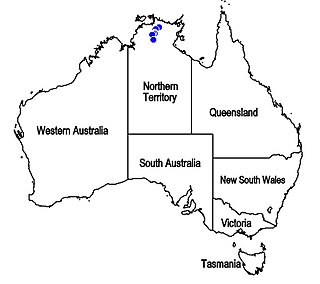
Pityrodia puberula is a flowering plant in the mint family Lamiaceae and is endemic to Arnhem Land in the Northern Territory. It is a straggling shrub with narrow, hairy leaves arranged in four rows and off-white, bell-like flowers with dark purple streaks.
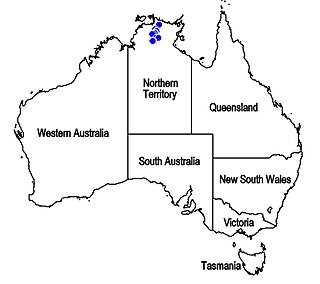
Pityrodia pungens is a flowering plant in the mint family Lamiaceae and is endemic to the northern part of the Northern Territory. It is an erect, spreading shrub with narrow, prickly leaves and off-white, bell-like flowers with dark purple streaks.

Pityrodia scabra is a species of flowering plant in the mint family Lamiaceae and is endemic to inland Western Australia. It is a sticky shrub with linear leaves arranged in whorls, and groups of about 7 to 9 white flowers.
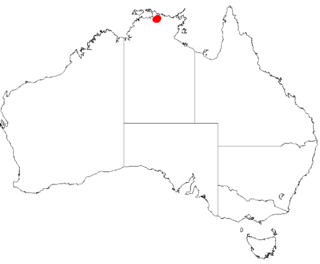
Pityrodia serrata is a species of flowering plant in the mint family Lamiaceae and is endemic to the northern part of the Northern Territory. It is an erect shrub with sharply-pointed, egg-shaped leaves with serrated edges, and off-white, bell-shaped flowers streaked with purple.

Pityrodia spenceri is a species of flowering plant in the mint family Lamiaceae and is endemic to the northern part of the Northern Territory. It is an erect shrub with hairy, heart-shaped or egg-shaped leaves, and white, tube-shaped flowers.

















